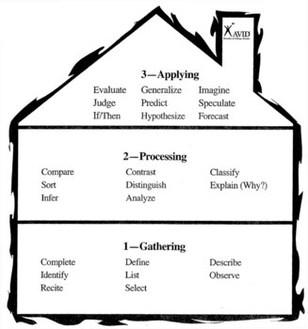Teachers are working hard investigating technology that can be used to facilitate the to transition to online learning, so the focus for this week was very timely: What are the ethical privacy and security challenges of using technology? As my week has been filled with lesson planning, connecting with students, collaborating with my colleagues, and assisting my own three teenagers in their academic transition my blog this week is a brief summary of two assigned readings and a few related resources and reflections.
Regan, P., & Jesse, J. (2019). Ethical challenges of edtech, big data and personalized learning: Twenty-first century student sorting and tracking. Ethics and Information Technology, 21(3), 167-179. DOI: 10.1007/s10676-018-9492-2
Six distinct ethical concerns are identified in this article:
- information privacy
- anonymity
- surveillance
- autonomy
- non-discrimination
- ownership of information
My science department is planning on using the cK-12 learning platform, so I had to investigate cK-12’s privacy policy in light of these ethical concerns. Of particular interest was the statement that “When a User registers using a Google, Facebook, Twitter or Microsoft account, we will automatically receive that User’s name, email, gender, and profile photo from Google, Facebook, Twitter or Microsoft.” It is also important to recognize that cK-12 is based out of the United States. Our school and district encourages the use of Google Apps for Education which is also US based. Students can access CK-12 using their sd61learn Google account, and if they are careful about the information they supply to google, then that will also limit the information they are supplying to CK-12. The important thing to recognize here is the opportunity to improve student digital literacy, and to reinforce the importance of protecting your private and personal information.
Another consideration with CK-12 are the opportunities for personalized learning. Personalized learning is a goal of our current education system in BC, however programs (such as cK-12 that offer adaptive learning) are at risk of being discriminatory by limiting the difficulty level that a student has access to. Monica Bulger describes this in Regan and Jesse’s article:
For many personalized learning systems, student data such as age, gender, grade level, and test performance are analyzed against idealized models of student performance, or students of the same background or class, or nationwide pools of grade and/or competency level. A profile is created for each student that typically categorizes her or him as part of a group that performs similarly or demonstrates shared interests or demographics. ” (pg. 9)
To learn more about the adaptive practice opportunities of CK-12 fast forward to the 26:00 min mark in the cK-12 webinar.
Regan and Jesse’s article further states that
The predictive analytics that are incorporated in many personalized learning programs may restrict the options available to students and thus limit the autonomy of students and of teachers who often do not understand or cannot easily explain why certain students are receiving different options than other students. (pg 10)
When considering the strict (or restrictive) guidelines for teachers implementing technology in High School I can’t help but present the following counter-argument: To create 21st century learners we must prepare students to use a wide variety of technologies. Examples include annotation software, online conferencing tools, and statistical analysis apps and software. Being too restrictive in the technologies we allow students to have access to in High School may not prepare them for the wide variety of technologies utilized in the work force. I believe it is far more important to teach our high school students to be digitally literate (and careful with their personal information) rather than severely limit their exposure to technology.
The second reading for this week by Maciej Cegłowski took an alternative view on technology use:
https://idlewords.com/2020/03/we_need_a_massive_surveillance_program.htm
Loosening the governance of technology usage seems to be the state of things in the midst of Covid 19. This is also evident in the following article written in The Times Colonist:
It certainly raises questions about the lasting impacts on student identity, freedom and privacy if we do not educate our students on digital literacies while we transition to online learning.
To conclude, Covid-19 has highlighted that education has a long way to go when it comes to being consistent in their endorsement of technology use. Messages are not inconsistent from the province, the district and the school. Perhaps everyone does not need to agree, though. Perhaps our efforts are better spent arming ourselves and our students with strong digital literacies and then allowing us to responsibly investigate all the interesting tech options out there.
Some of those tech options are provided in the following RVS Digital Literacies Resources Blog: https://sites.google.com/rvschools.ab.ca/rvsdigitalliteracies/home




